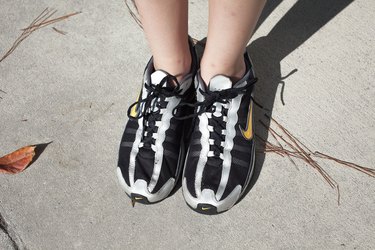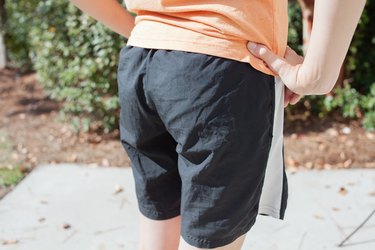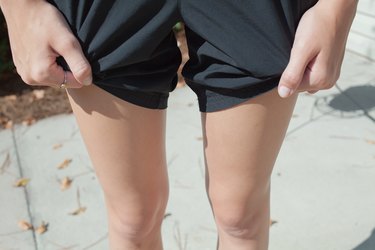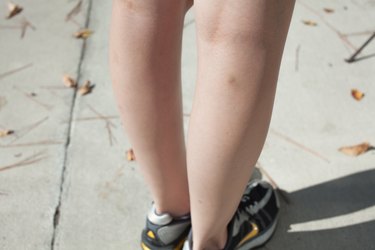
When people think of exercises to build or tone their muscles, they most likely consider weight machines or other strength- and resistance-oriented activities. Distance running, however, although undertaken most often as a way to lose weight or build cardiovascular fitness, is an effective way to firm up your leg muscles, especially when you lose fat in the process and thus allow those muscles to show themselves all the more.
Gluteal Muscles
Video of the Day

You have three pairs of gluteal muscles — the gluteus minimus, gluteus medius and gluteus maximus. The latter muscle is, as the name implies, the largest of the three and is responsible for the overall shape of your butt. The job of these muscles is to keep the upper body upright — that is, to extend the legs at the hip. This, as Kirk Mahoney, Ph.D. points out, is why four-legged animals have almost no gluteal muscle mass. If you want to tone these in particular, plan on a lot of running up steep hills.
Video of the Day
Hamstrings

The hamstrings consist of three muscles in the back of the thigh on each side — the biceps femoris, semimembranosus and the semitendinosus. Their job is to flex the lower leg at the knee. They are called into heavier duty during sprinting, because it accentuates the swing phase of the gait cycle. Although running works these muscles, they are, as explained in "Running Times," subject to overuse injuries because the muscles on the other side of the thigh, the quadriceps group, assume a higher share of the burden of running and thereby set up the hamstrings to be weaker.
Quadriceps

The four muscles of the quadriceps group of the thigh, usually the most prominent muscles in runners owing to both their location and considerable overall size, span two joints — the knee and the hip — and have two functions: extending the leg at the knee and flexing the thigh at the waist. They participate in braking when you run downhill, when you are at the greatest risk of injuring them. In a runner with especially firm quads, the four individual muscles are easily distinguishable.
Calves

Your calf muscles include the gastrocnemius, the more prominent of the two muscles in this area, and the soleus, which attaches lower on the back of the shin than the gastrocnemius and is seated more deeply. Together, these muscles flex the foot downward at the ankle, making them responsible for virtually all of the push-off phase during running, Therefore, if you want to build more strong and toned calves, sprinting and hill running will get the job done. Be careful, however, to stretch and warm up before you run to minimize injury risk.